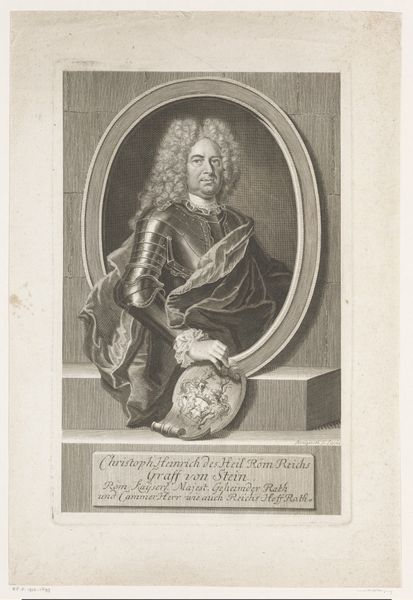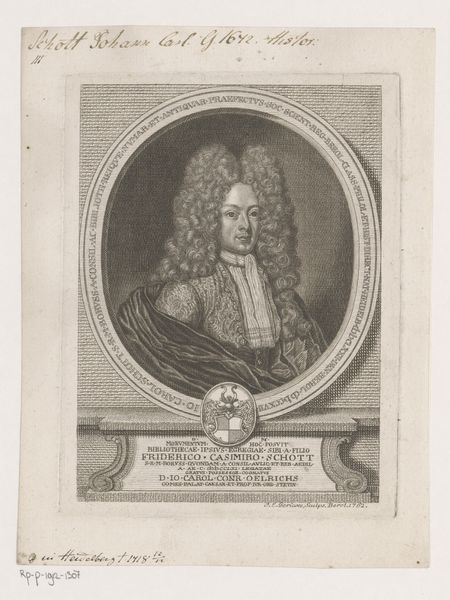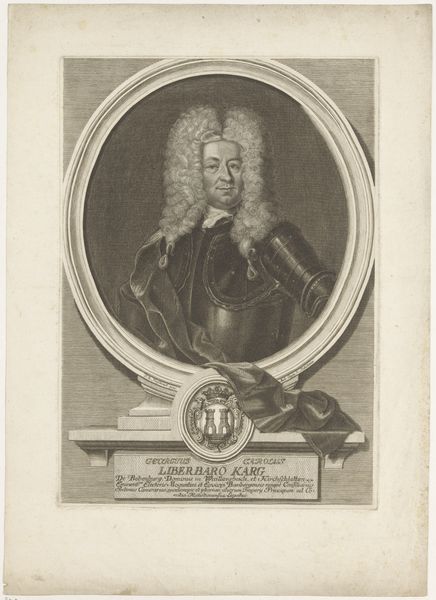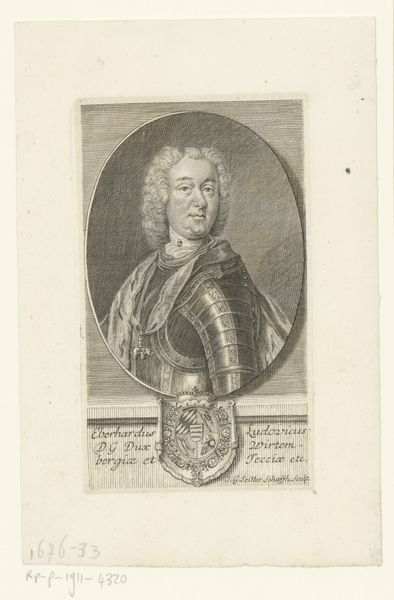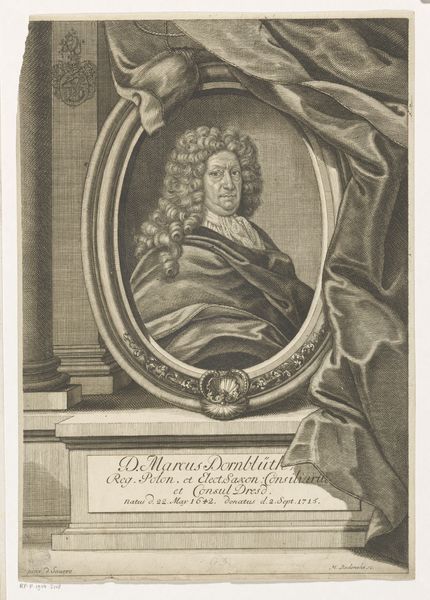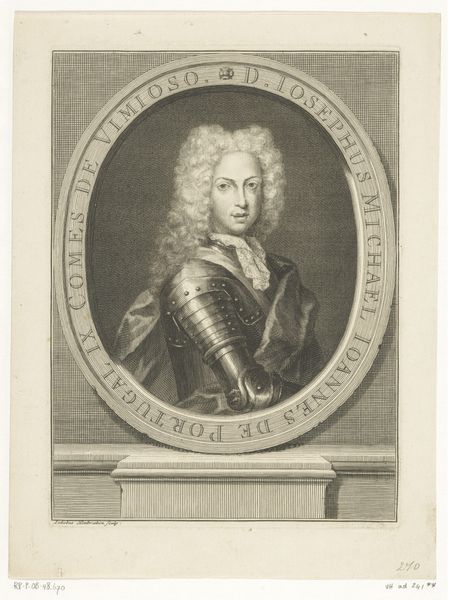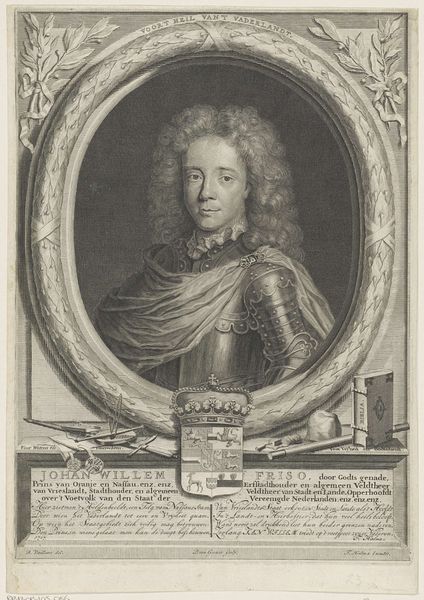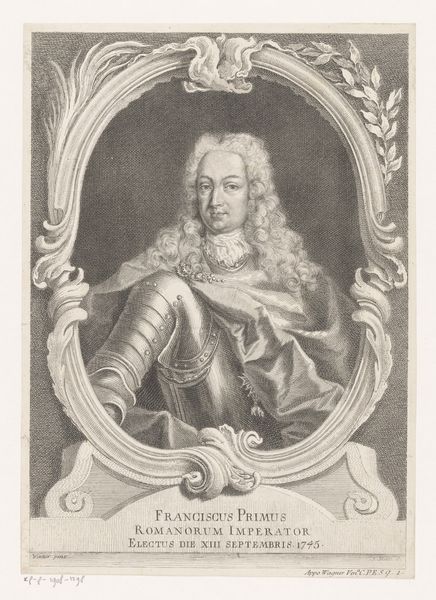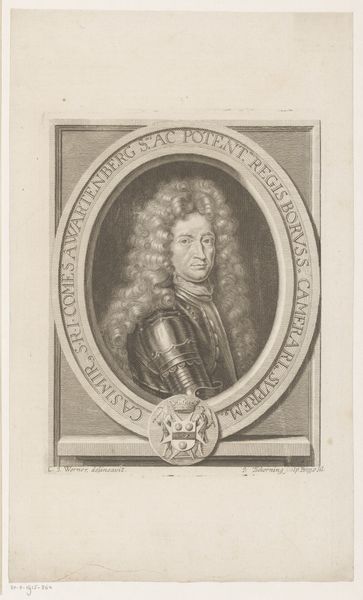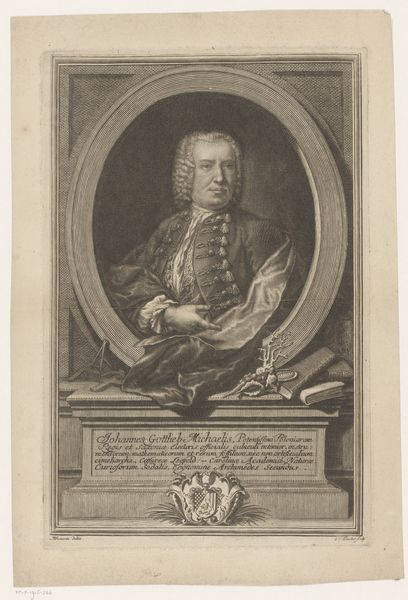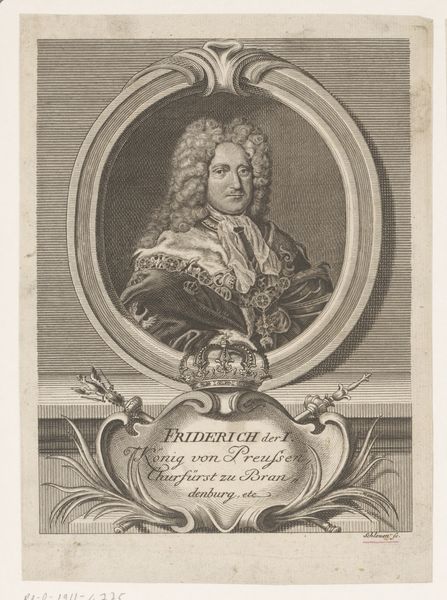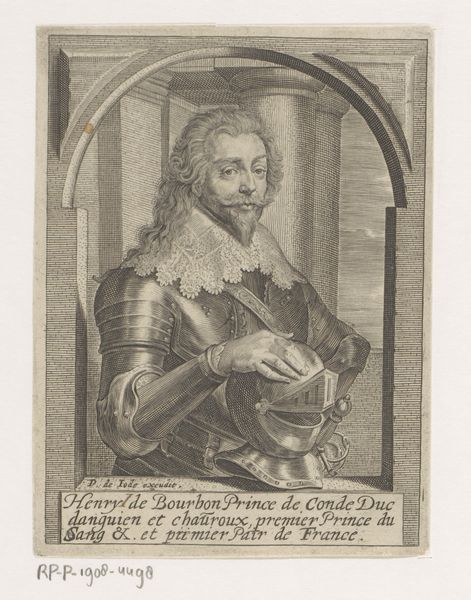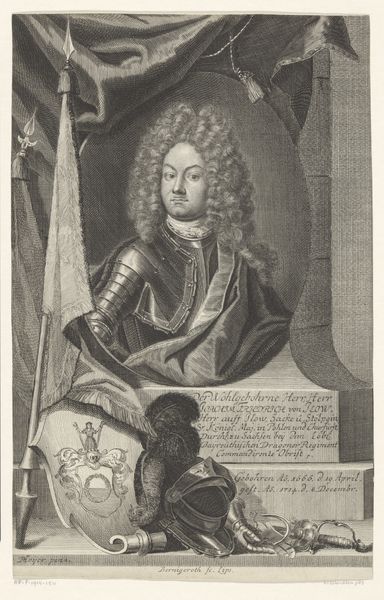
engraving
#
portrait
#
baroque
#
old engraving style
#
line
#
history-painting
#
engraving
Dimensions: height 295 mm, width 195 mm
Copyright: Rijks Museum: Open Domain
Curator: Welcome to the Rijksmuseum. Today, we are examining an engraving of Ludwig Wenzel von Hund und Alten Grottkau, dating back to the period between 1718 and 1748. It's an excellent example of the portrait style popular then. Editor: My initial feeling is one of intense formality and also, honestly, a touch of somberness. The starkness of the line work, combined with what looks like armor, creates a rather severe image. Curator: Absolutely. Moritz Bodenehr, the engraver, captures Ludwig in full armour, an object of immense political significance at that moment, reflecting the power dynamics of the time. You see this portrait was meant to reflect his social standing as he ascends in society. Editor: The armor definitely speaks to the social and political climate. It projects a very particular kind of masculinity, linked inextricably with warfare and status. I find myself wondering, what message was being communicated to its intended viewers? How does an image like this shape societal expectations surrounding class and gender? Curator: Good questions. This engraving functions, like many portraits of the era, to solidify Ludwig’s lineage and connections to power. Its intended audience likely consisted of fellow elites, cementing a specific societal structure. This isn't just about capturing his likeness; it's about propagating a certain image. And as seen engraved, underneath the subject, we can see the memento mori. Editor: The 'memento mori', such an important inclusion. It subtly weaves in the awareness of mortality into a portrait celebrating worldly status, bringing forth reflection on the fleeting nature of power and life. Even this awareness doesn't detract from his portrayal, however, emphasizing the impact an individual can leave in the world. Curator: I completely agree. In essence, the artwork speaks to a complex interplay of individual identity, social standing, and the awareness of the ever-passing march of time within a rigidly hierarchical world. It encourages viewers to recognize the multi-layered symbolism inherent to portraiture of the time. Editor: Precisely. When engaging with the visual legacy of the past, we should consider not only how artwork conveys historical events but how it shapes future perception and ideology. Ludwig, therefore, serves as a perfect gateway for just that exploration.
Comments
No comments
Be the first to comment and join the conversation on the ultimate creative platform.
